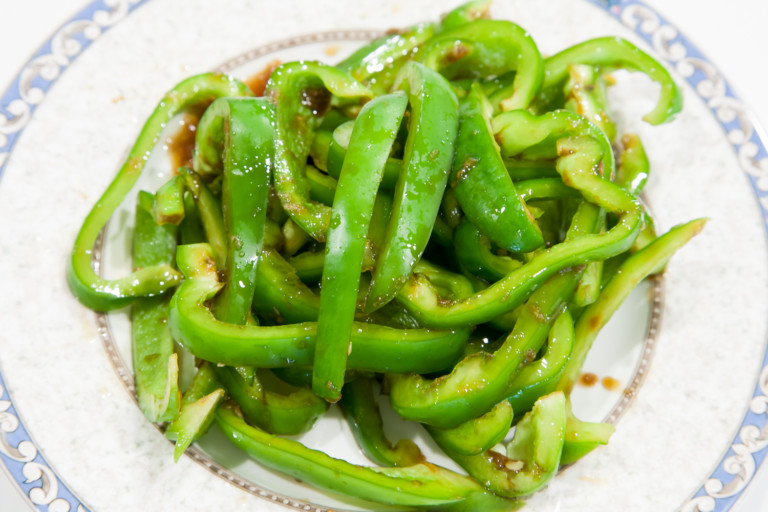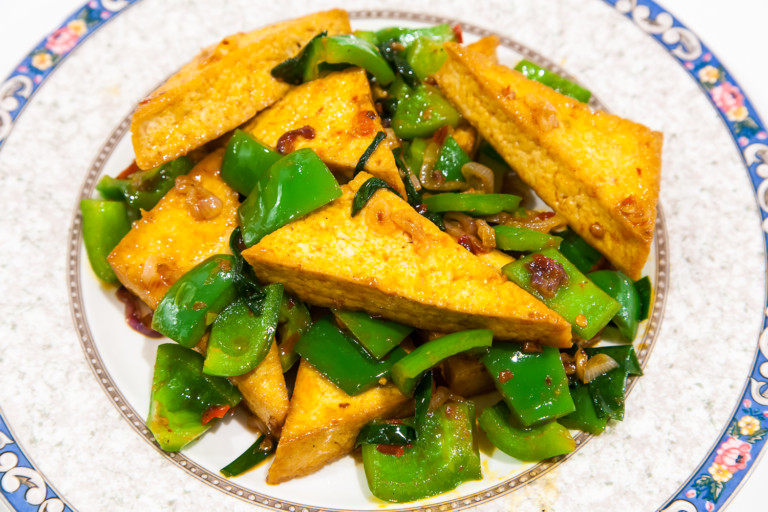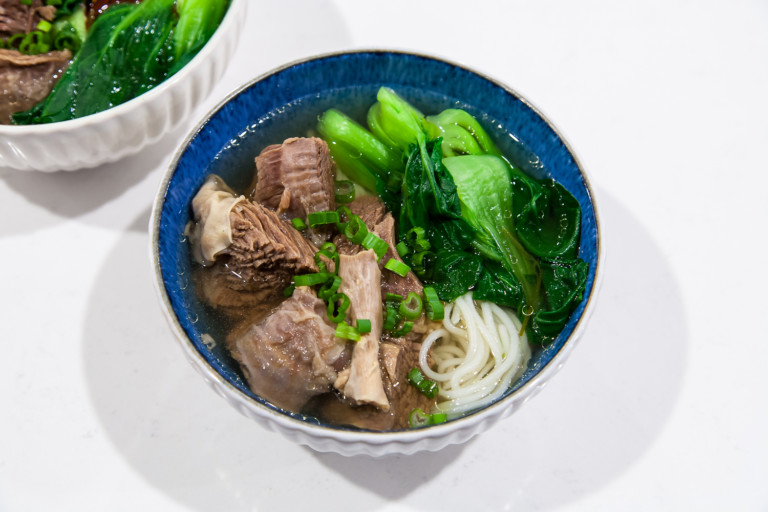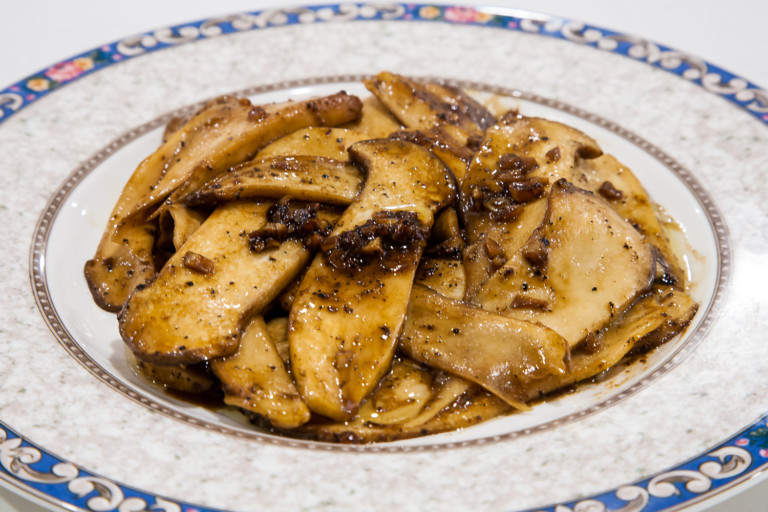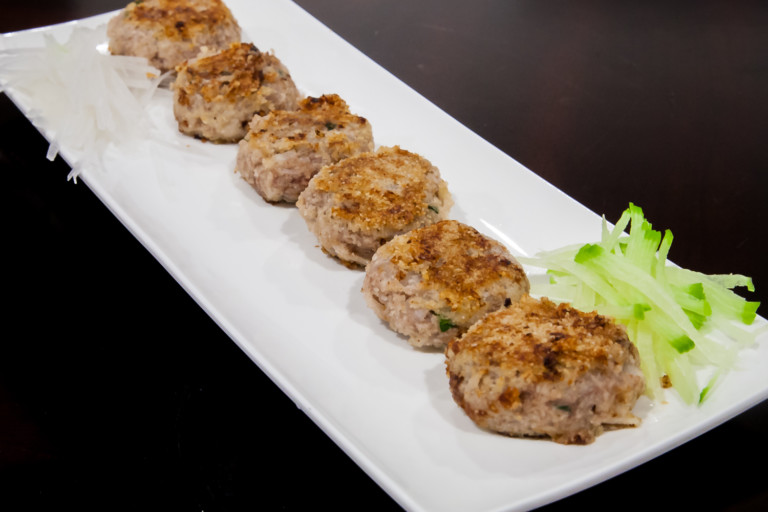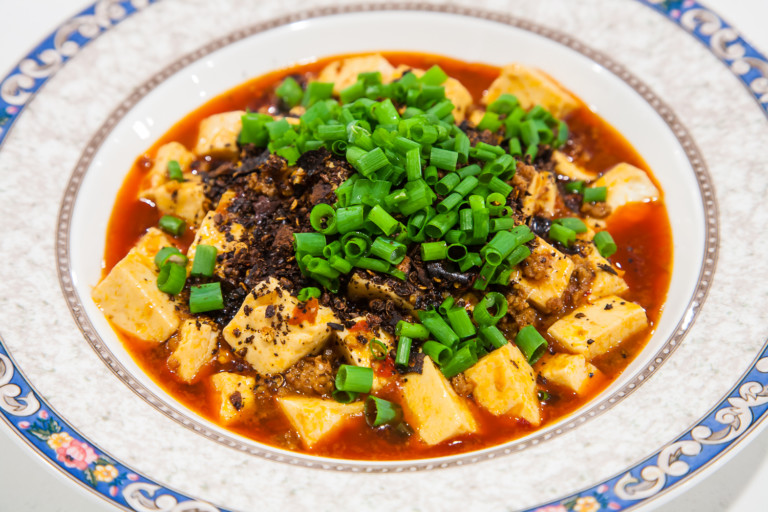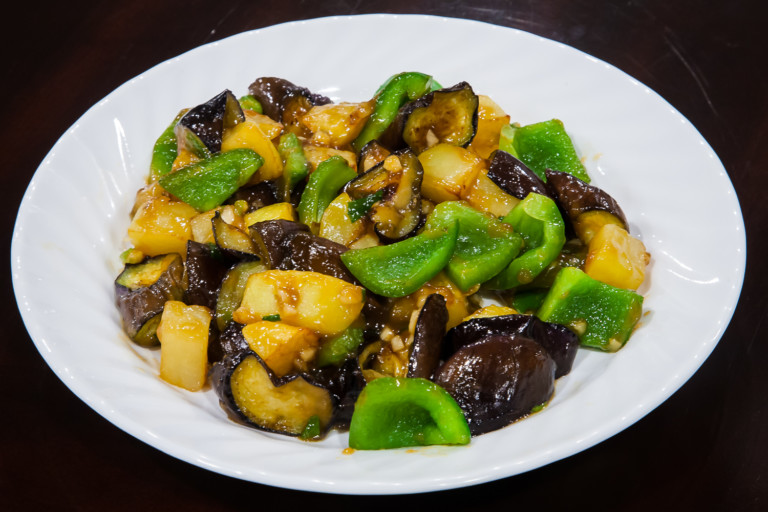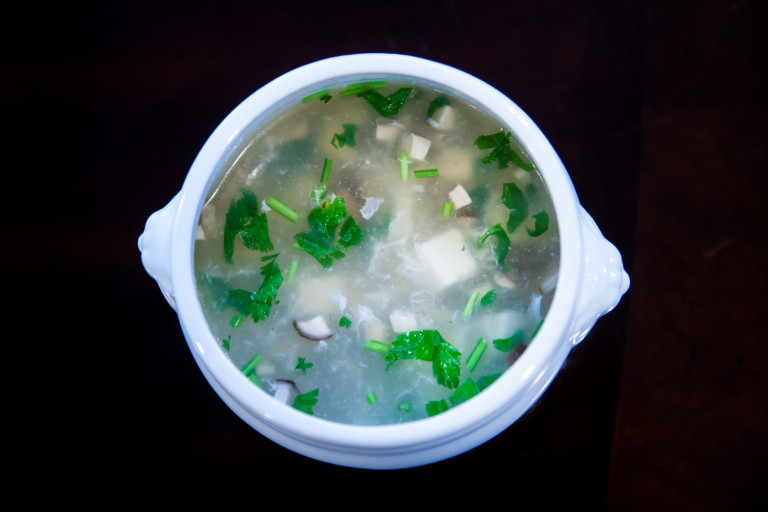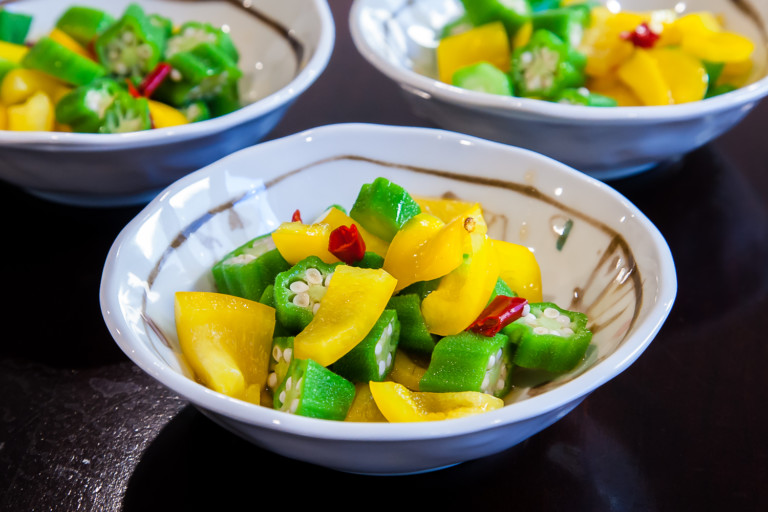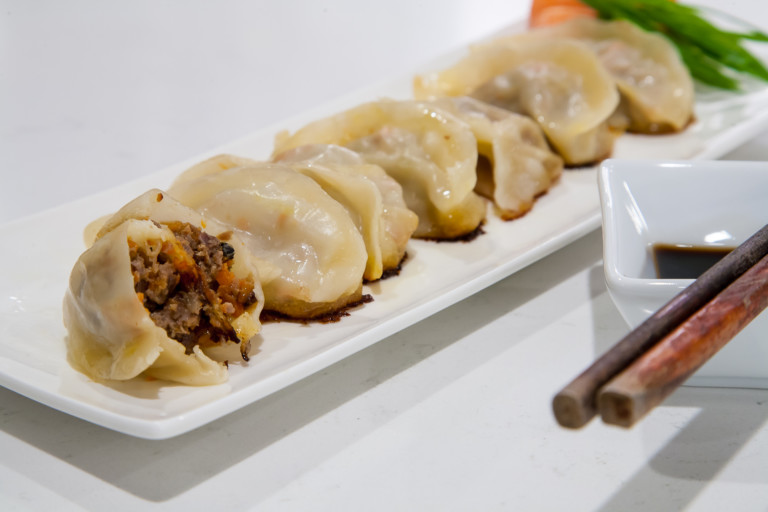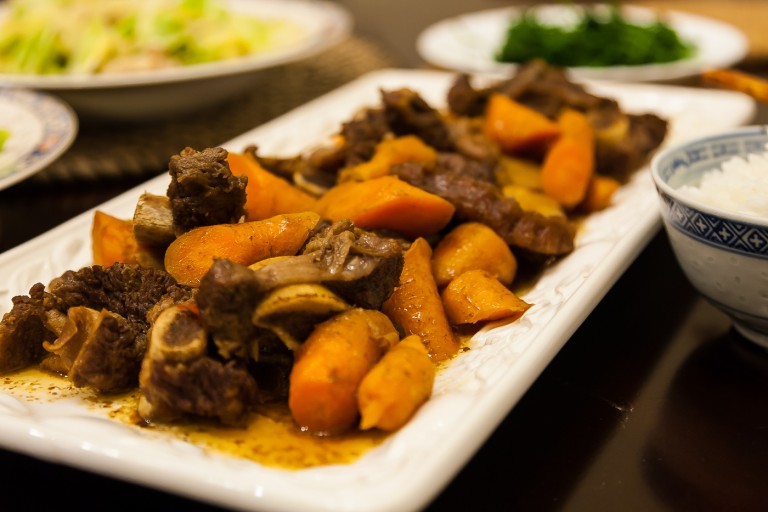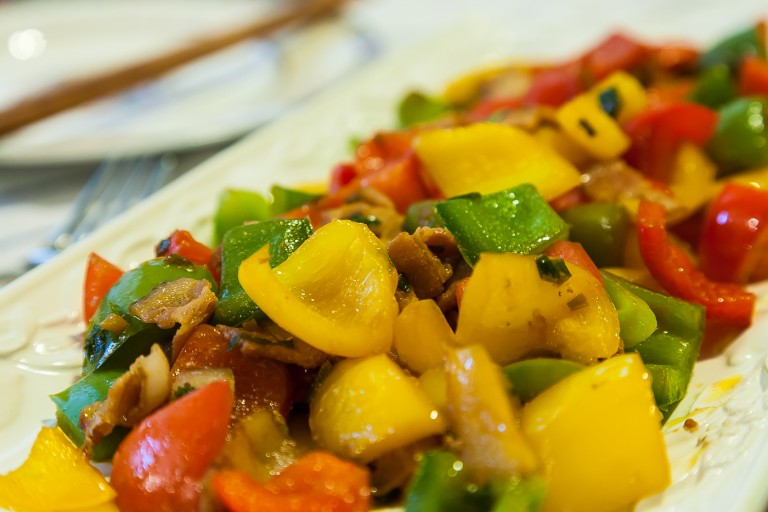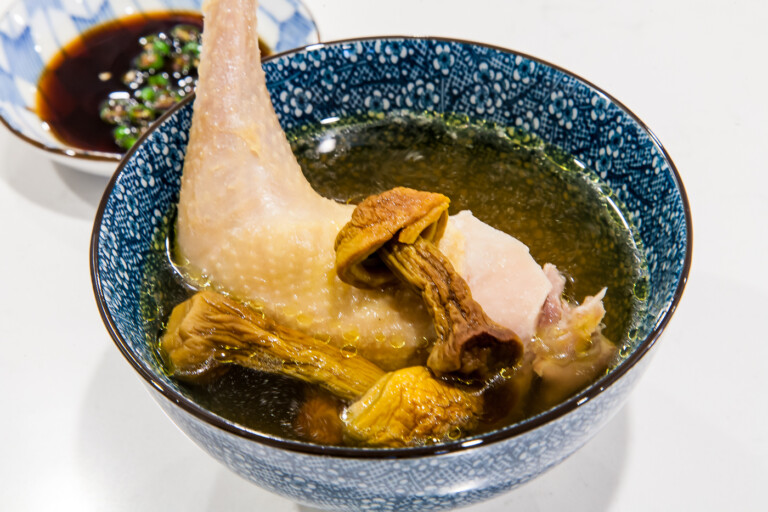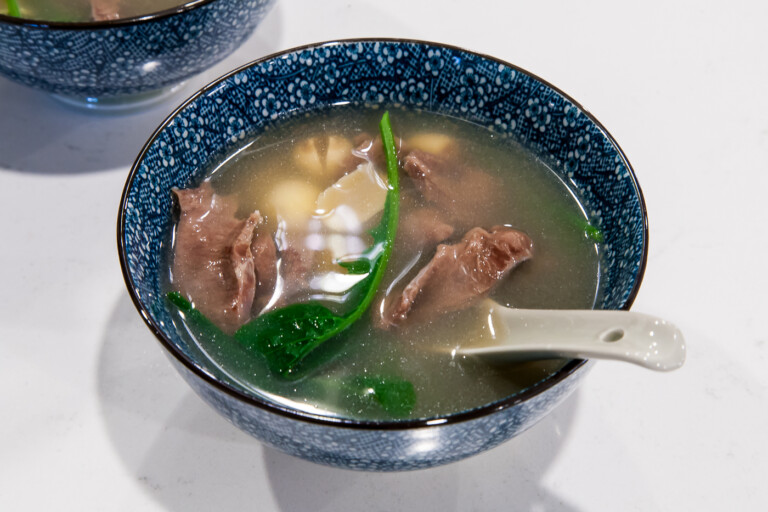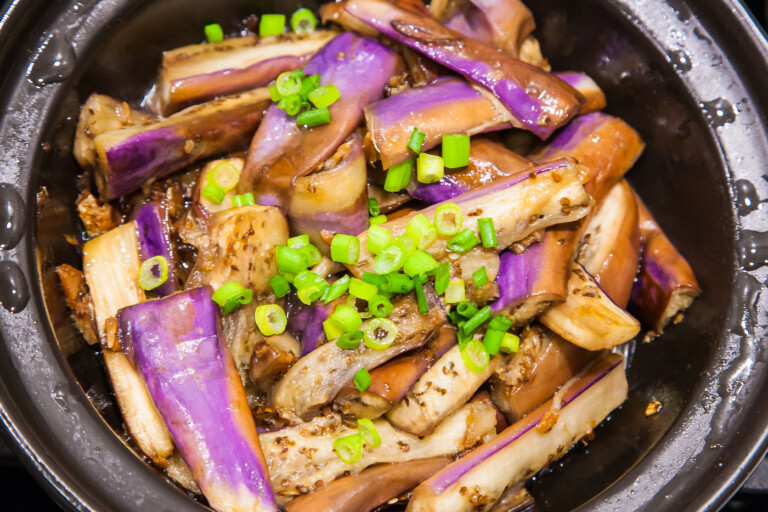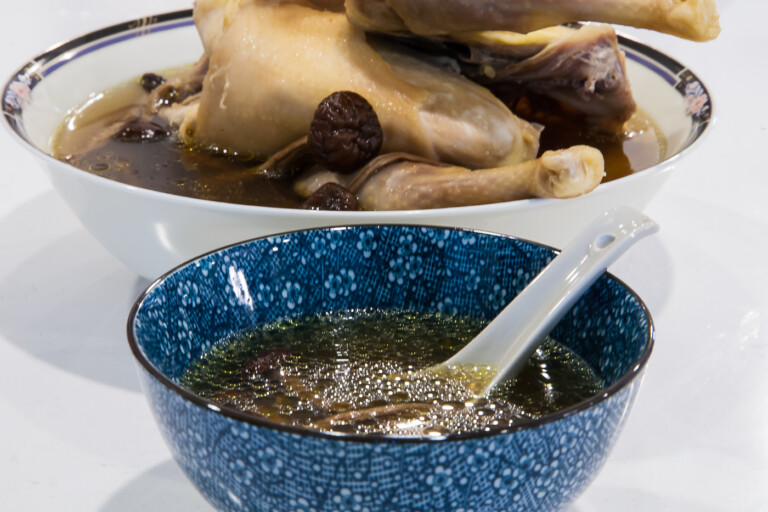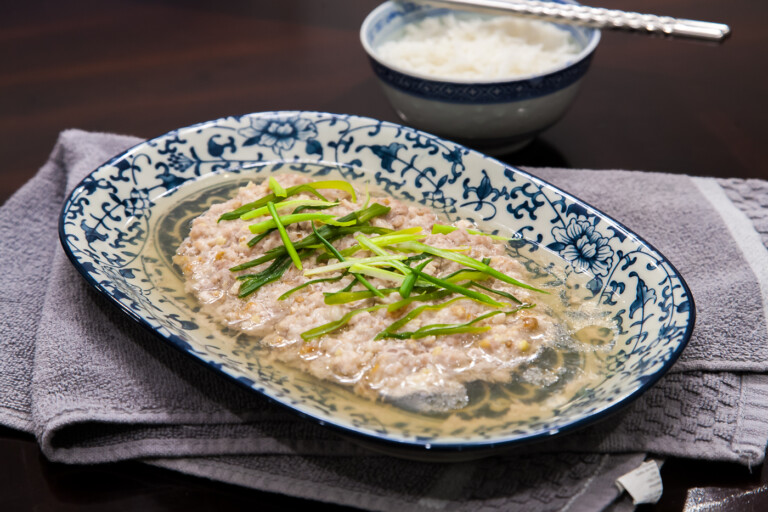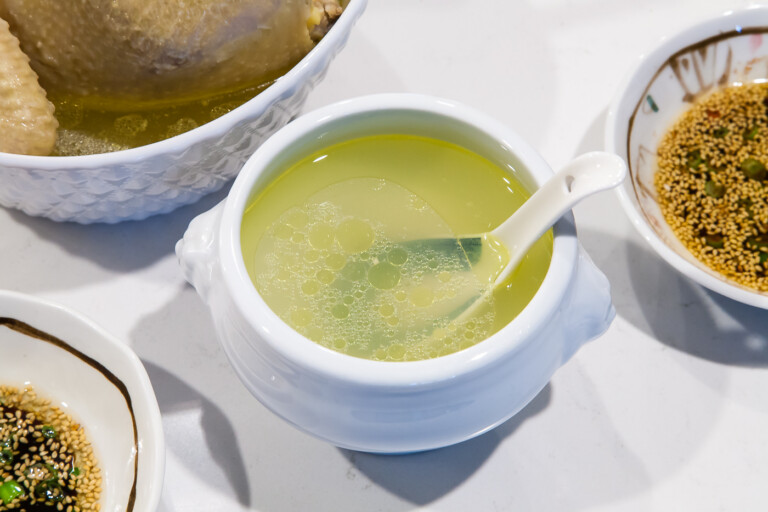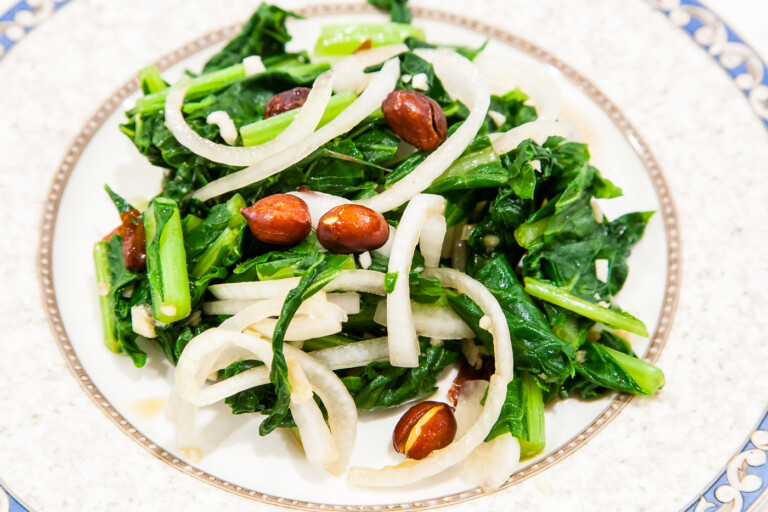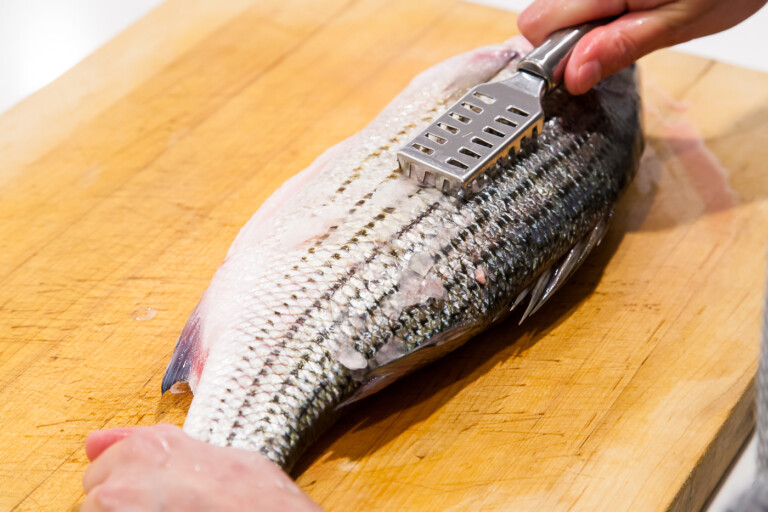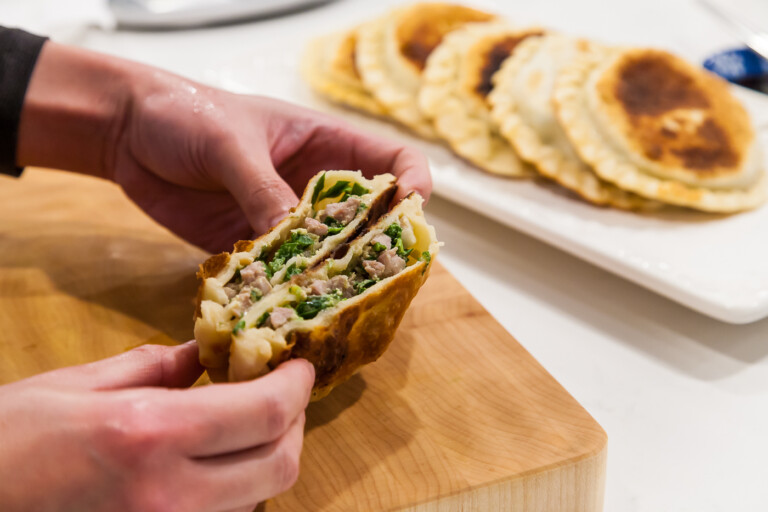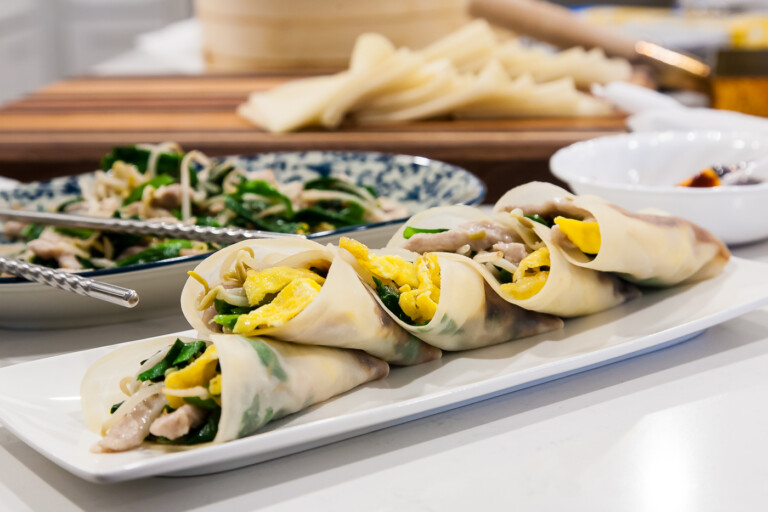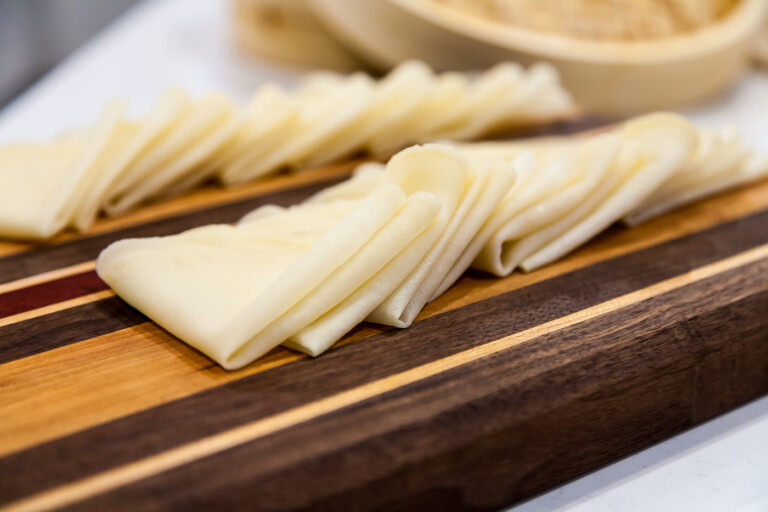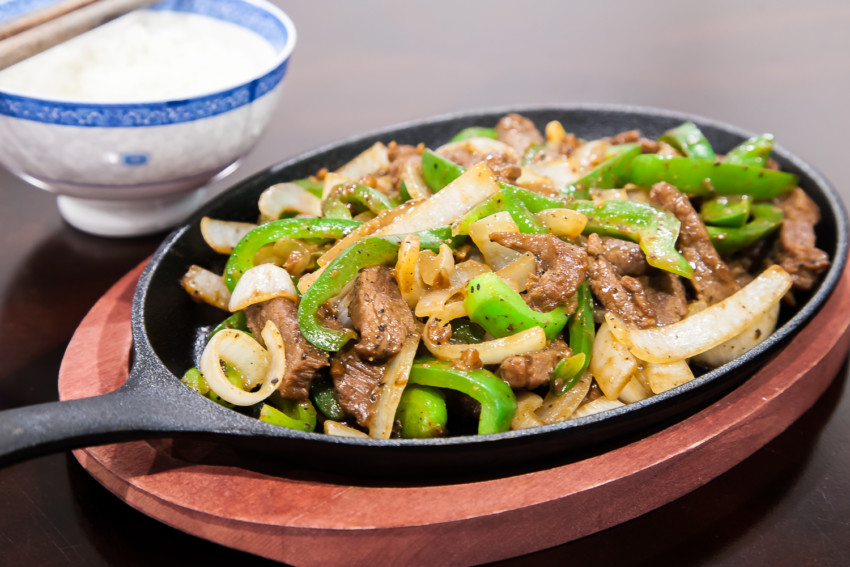
Pepper Beef (黑椒牛柳 Hei Jiao Miu Liu)
September 25, 2021 Print
I finally cracked the code for making this popular dish, Pepper Beef, to my satisfaction. I’ve tried many times in the past, probably no less than a dozen times over just the past year. Although each time that I made it, my family would still eat and enjoy it, I always thought something was off. Either the beef was too chewy, the black pepper flavor was not strong enough, or the beef did not have the right aftertaste. I’ve experimented with different tenderizing and marinating methods, and after many trials and errors, I finally feel comfortable enough to share my version with everyone.
Pepper beef is definitely a perfect example of when east meets west. I don’t know exactly when Pepper Beef became a dish in Cantonese cuisine, but it has heavily western-influenced ingredients cooked in an eastern way. I’ve had this dish many times growing up in China. When it’s done correctly, the beef is so tender that it can almost melt in your mouth. The black pepper sauce adds more flavor and kick to the beef, making it even more mouth watering.
The key to this dish mostly depends on two things, tenderizing the beef and making the black pepper sauce. I’ve tried different ways to tenderize the beef. The method I am posting below is a more reliable and foolproof method that uses baking soda. One caveat: after tenderizing, the baking soda needs to be completely washed off from the beef. Otherwise the beef will have a strong baking soda aftertaste. I like to use my hands to massage the beef to help remove baking soda while rinsing. I can’t emphasize enough of how important this step is. I’ve had failures in the past due to putting the baking soda and marinade together, which I did to save time.
Although you can buy black pepper sauce from grocery stores, I prefer my homemade version. It’s so flavorful and easy to make, unlike some other Asian sauces. The advantage of making black pepper sauce at home is that the sauce is fresher and you can tailor it to your liking. You also make only the amount you plan to eat, reducing waste. If you buy a jar from the store, chances are it might take you a while to finish. The black pepper sauce ingredients are easy to find and can be found in most western grocery stores.
For this recipe, I used fresh peppers that I grew in my organic vegetable garden. The peppers have grown quite tall and are likely nearing the end of their productive lives, but somehow, they are still going strong!
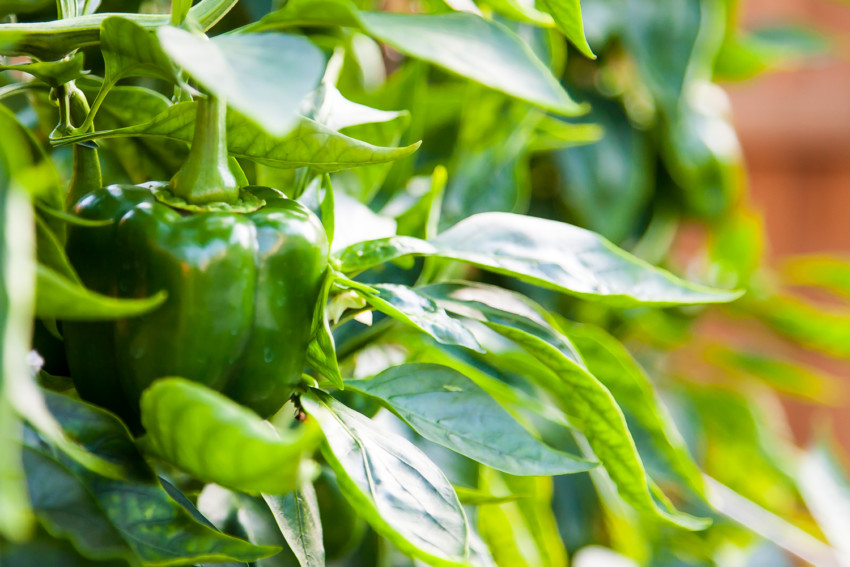
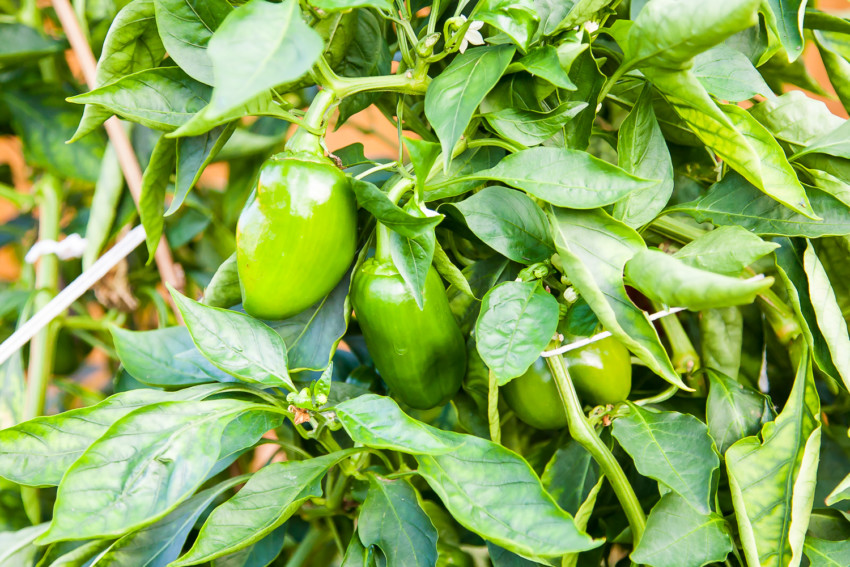
Pepper beef goes very well with just white rice or congee!
Low Carb
Preparation Time: 1 hour 10 minutes
Total Time: 1 hour 30 minutes
Servings: 2 – 4 people
Ingredients:
- ~1/2 lb (225g) beef flank or skirt steak
- 1 medium onion
- 2 small green bell peppers or 1 medium green bell pepper
- 1/2 teaspoon baking soda
- 1 teaspoon freshly-ground black pepper
- 1/4 teaspoon kosher salt
- 1 teaspoon light soy sauce
- 1/2 teaspoon sugar
- 1 tablespoon water
- 1 tablespoon starch
- 2 tablespoons and 1 teaspoon vegetable oil (three total uses)
Black Pepper Sauce:
- 5 large garlic cloves
- 1 tablespoon vegetable oil
- 2 teaspoons freshly ground black pepper
- 2 tablespoons Worcestershire sauce
- 1 teaspoon light soy sauce
- 1/2 teaspoon oyster sauce
- 1/2 teaspoon dark soy sauce
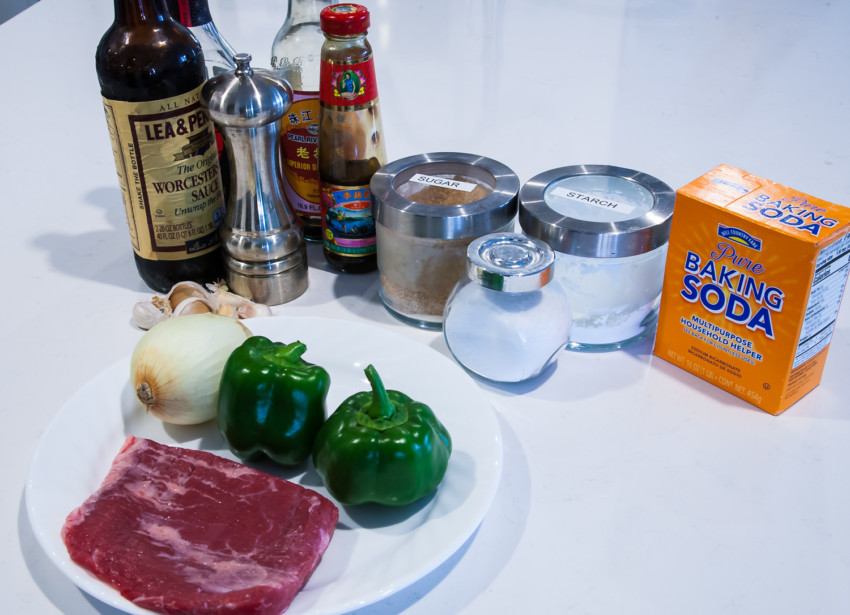
Preparation:
- Cut the beef flank, against the grain, into ~2 inch (5 cm) long strips. If beef flank is thick, use a sharp chef’s knife to slice the beef flank into two thinner pieces. Or use a meat pounder to pound the beef so that it thins out. Put the beef strips in a medium mixing bowl.
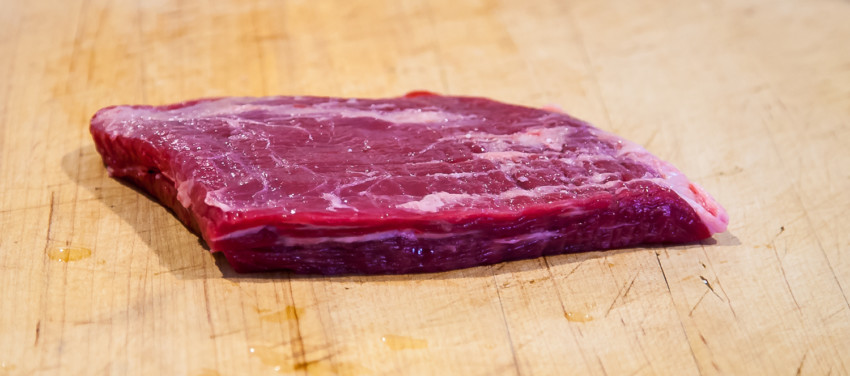
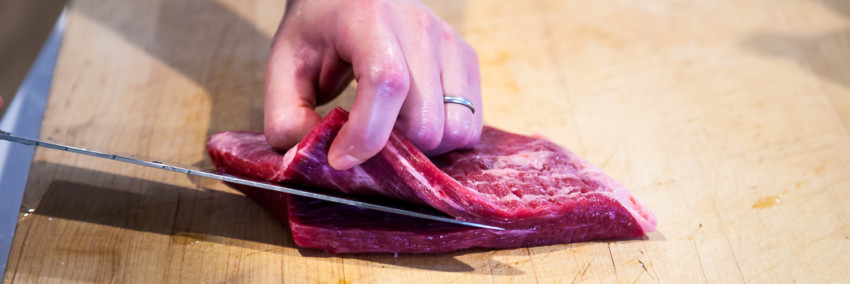
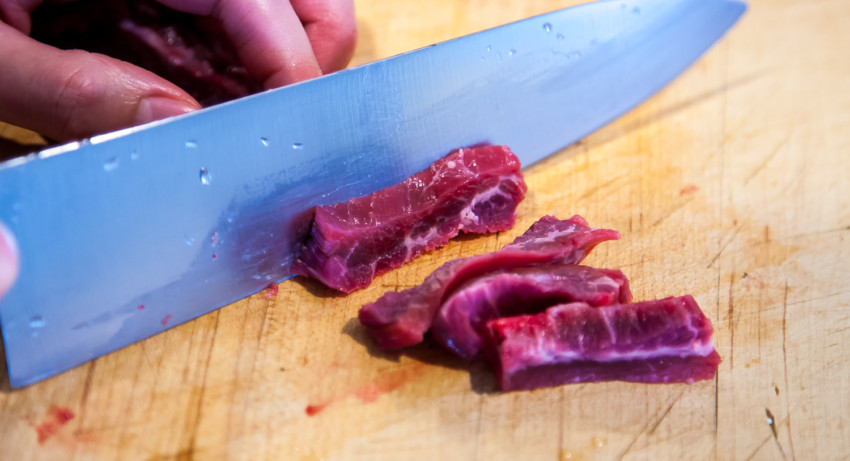
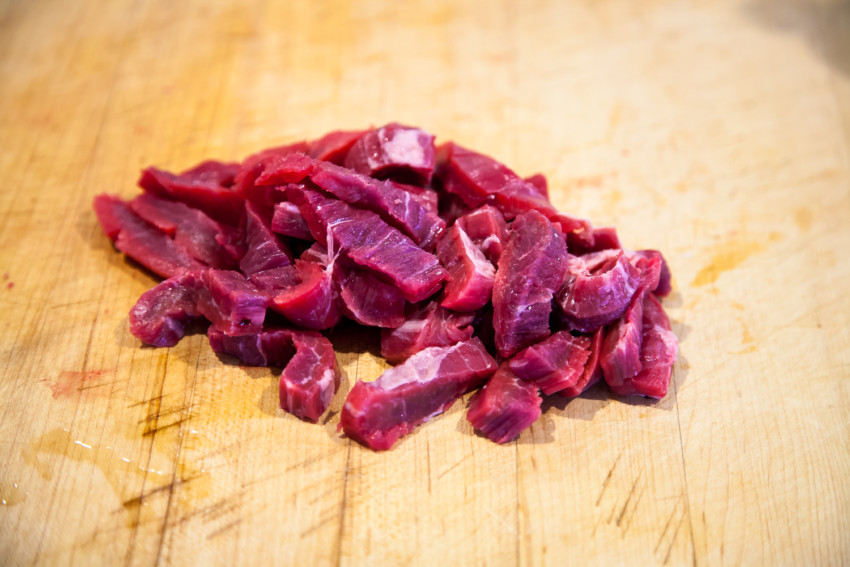
- Add the 1/2 teaspoon of baking soda to the beef strips, mixing and massaging thoroughly with your hands for a few minutes until the baking soda is evenly applied. Cover the bowl. Let the beef rest in the refrigerator for 30 minutes.
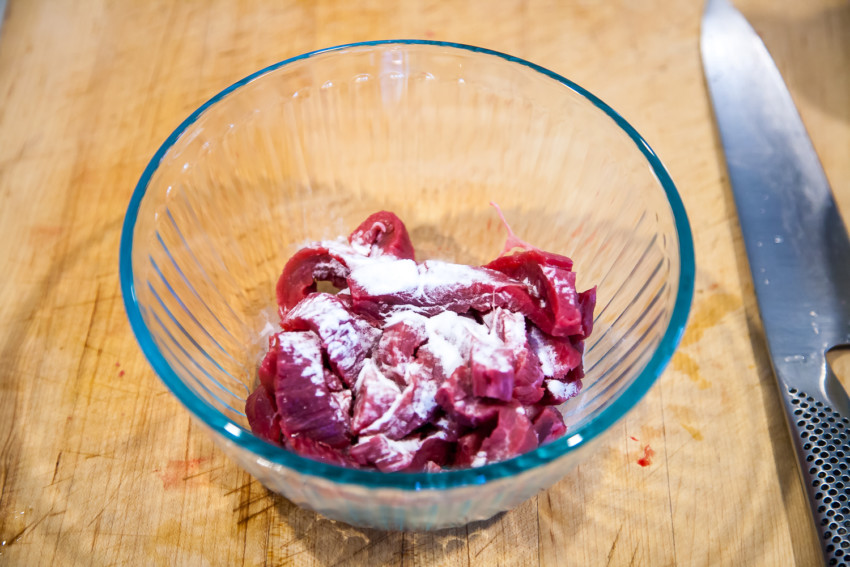
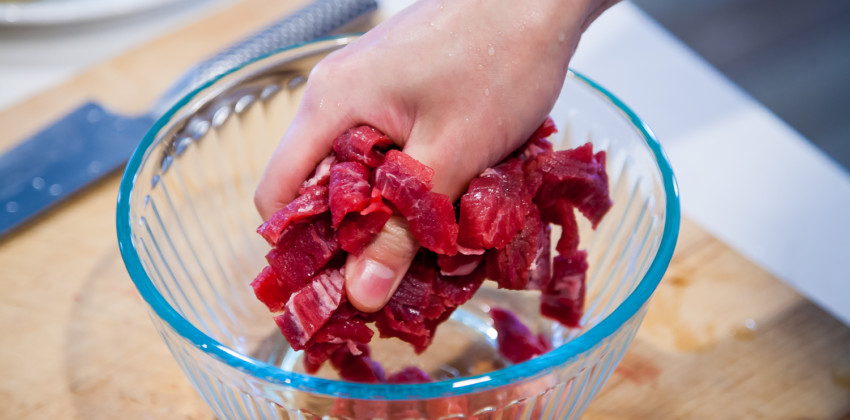
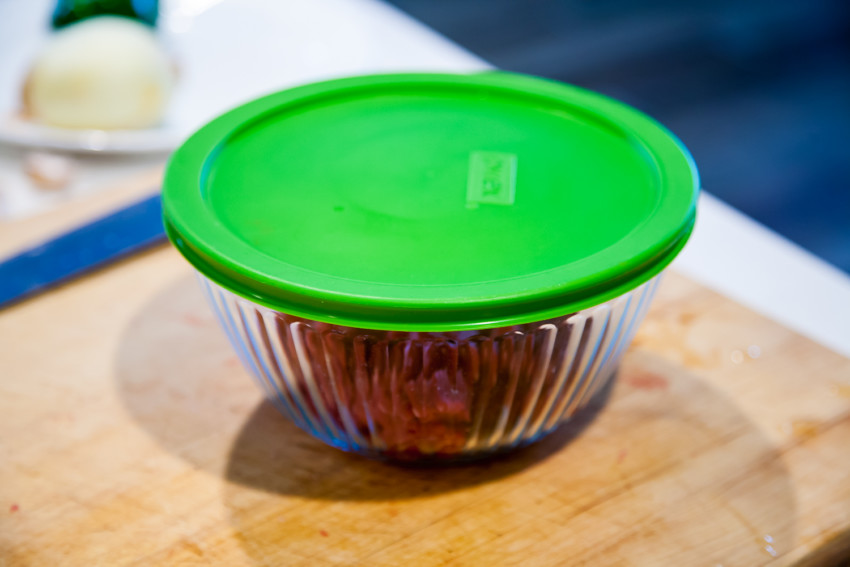
- After 30 minutes are up, rinse the beef several time under running water to completely remove the baking soda (this step is crucial because otherwise the beef will have a baking soda aftertaste). No need to pat dry. In the same bowl, add 1 teaspoon of freshly ground black pepper, 1/4 teaspoon of kosher salt, 1 teaspoon of light soy sauce, 1/2 teaspoon of sugar, and 1 tablespoon of water, and mix well. Then mix in 1 tablespoon of starch. Put the beef back into the refrigerator for another 30 minutes.
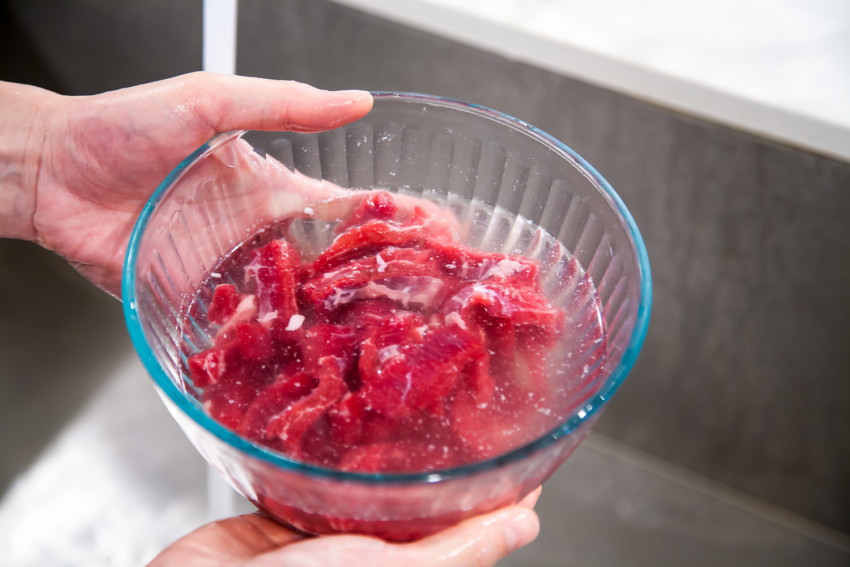
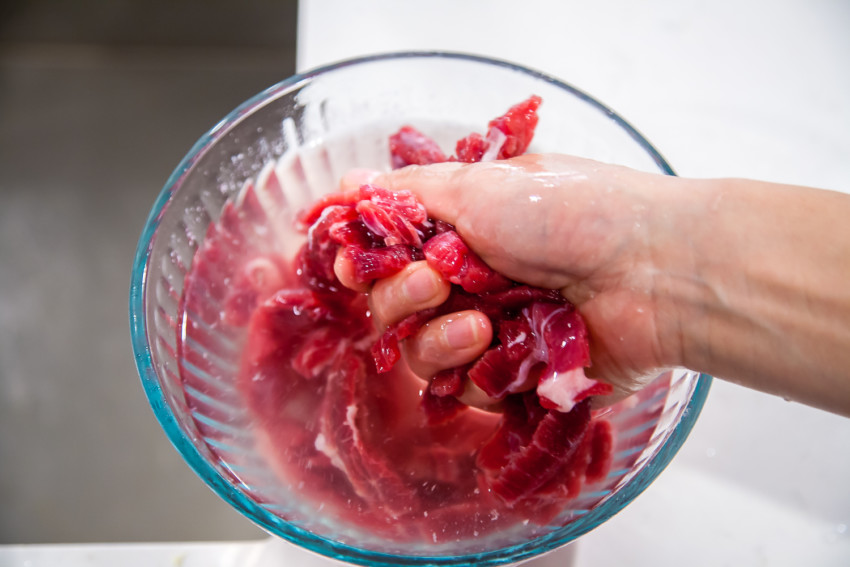
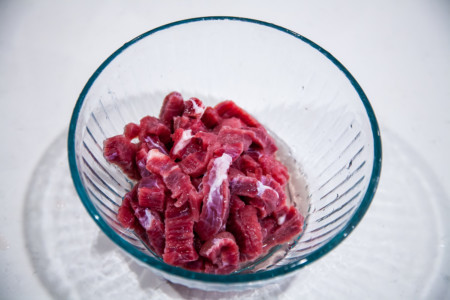
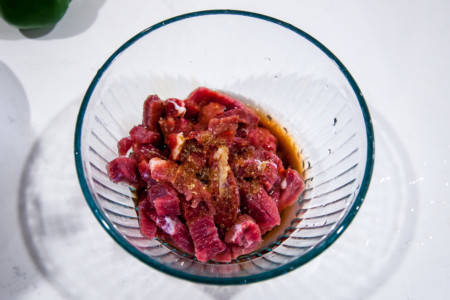
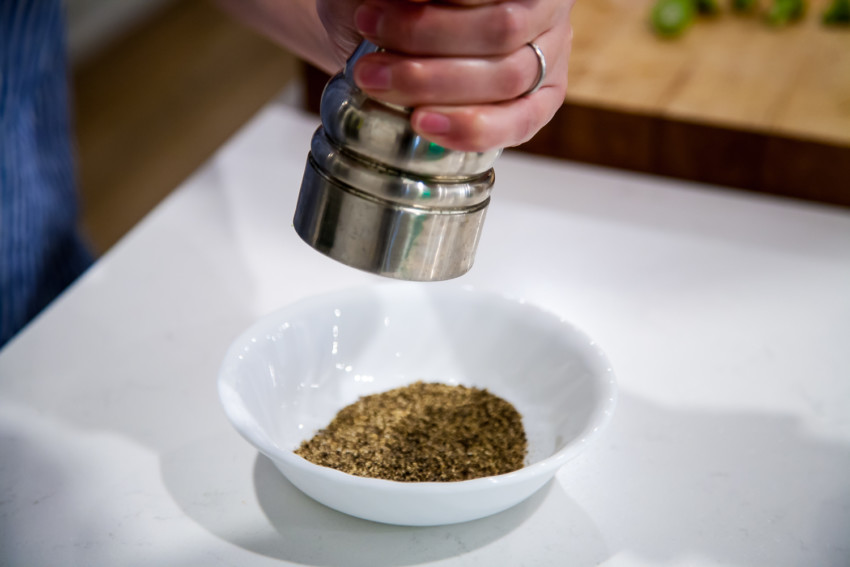
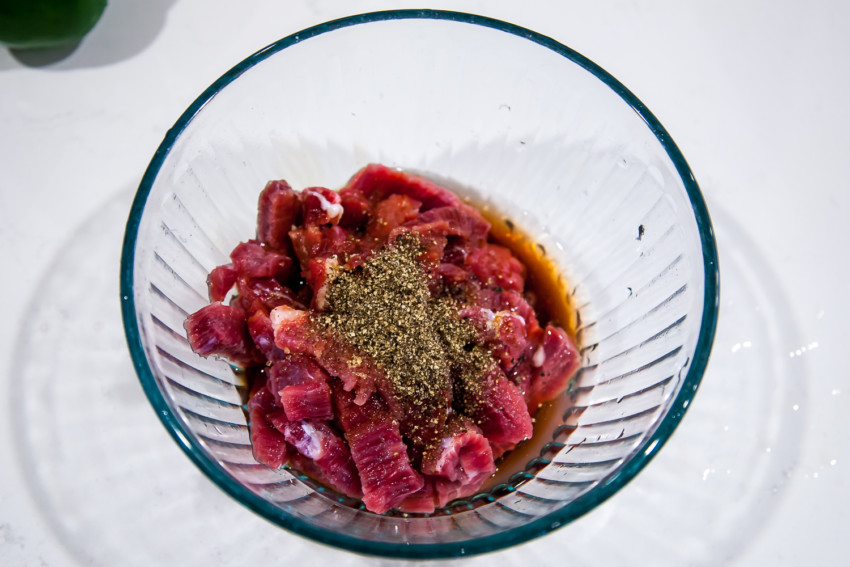
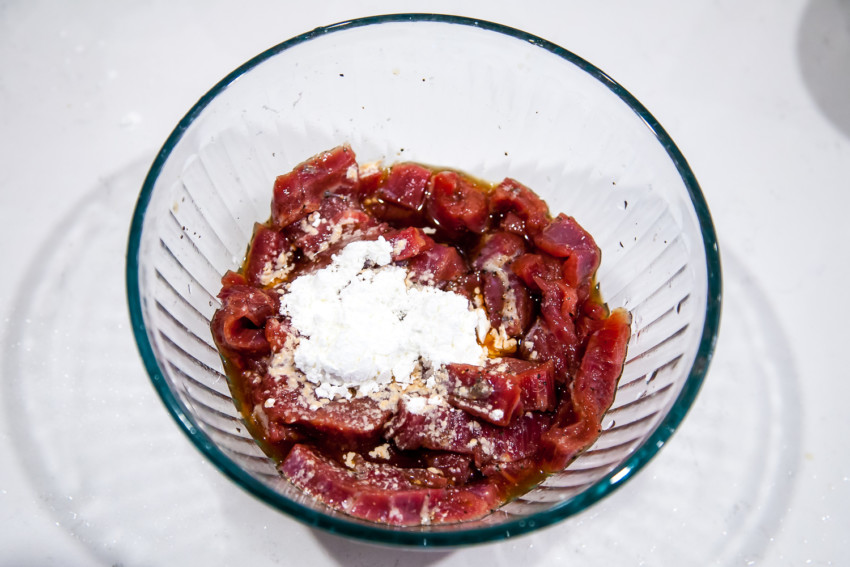
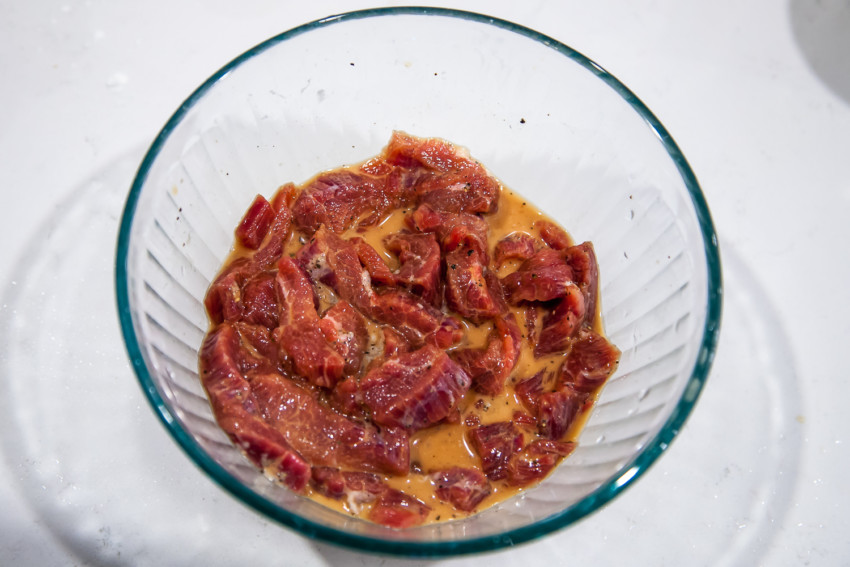
- While the beef is marinating, prepare the other ingredients and make the black pepper sauce (you can also do these while the beef is tenderized during step 2). Wash and slice the onion and bell peppers. Set aside.
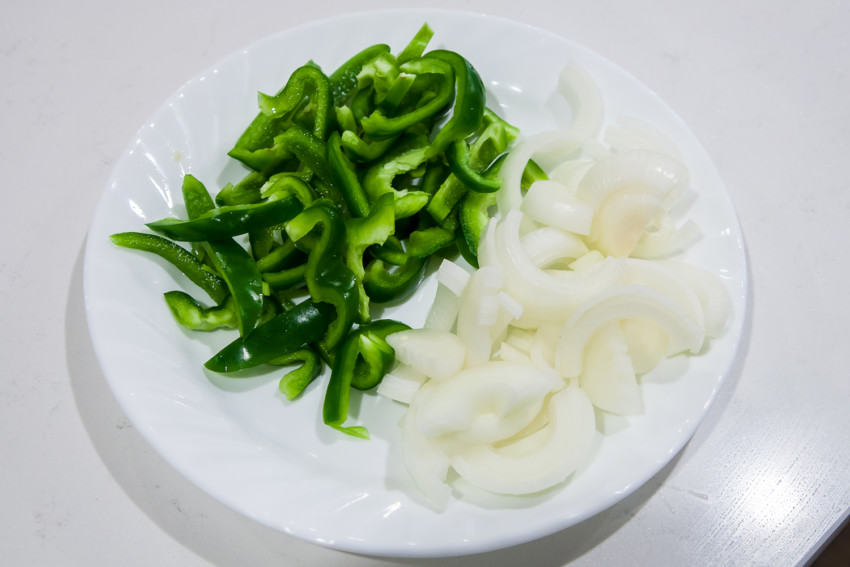
- Black Pepper Sauce: Peel and mince the garlic cloves. Heat a small sauce pan under medium-low or low heat. Pour 1 tablespoon of vegetable oil into the sauce pan. When the oil is getting warm, add the minced garlic. Let the oil slowly cook the garlic until it becomes soft and slightly golden. Then add the 2 teaspoons of freshly-ground black pepper, 2 tablespoons of Worcestershire sauce, 1 teaspoon of light soy sauce, 1/2 teaspoon of oyster sauce, and 1/2 teaspoon of dark soy sauce, mixing thoroughly. Stir occasionally to prevent the sauce from sticking to the bottom of the pan. When the sauce becomes dark and has a thick, semi-liquid consistency, turn off the heat.
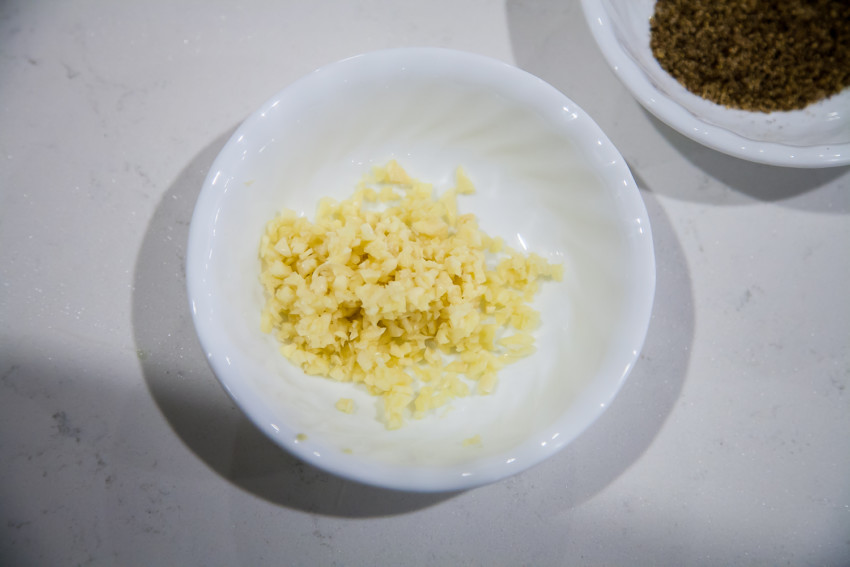
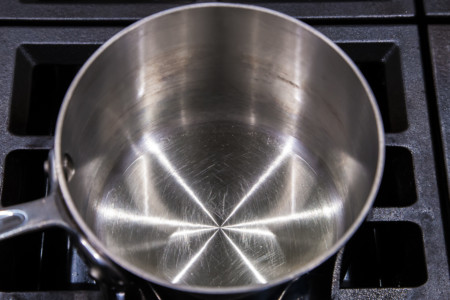
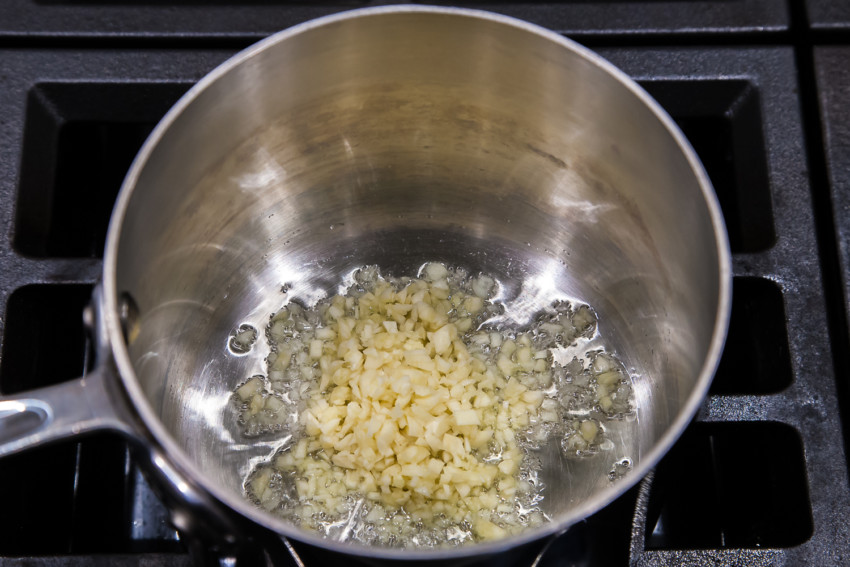
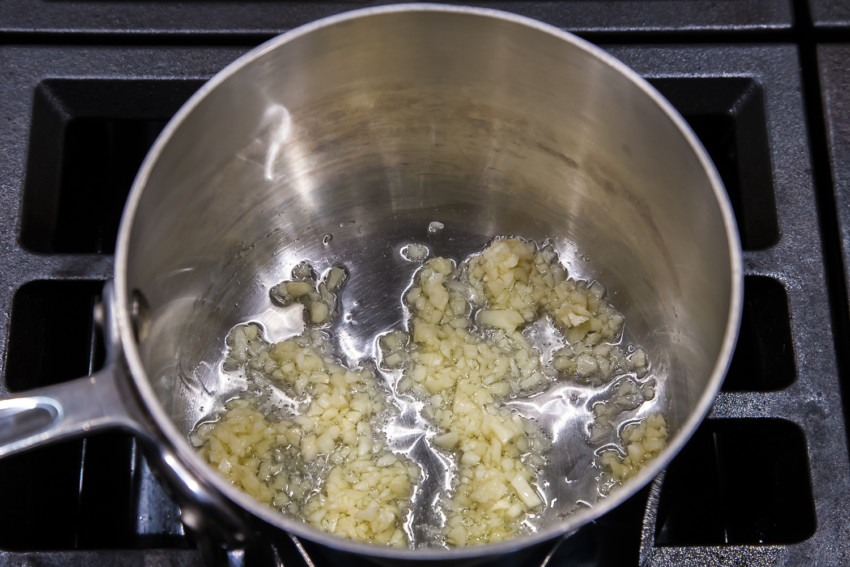
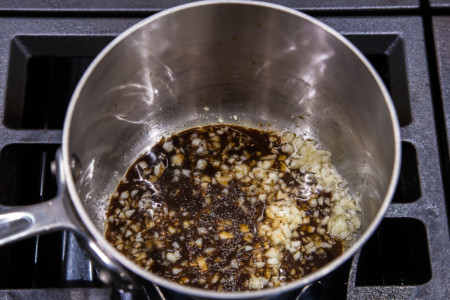
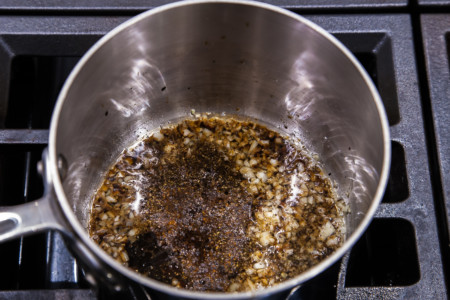
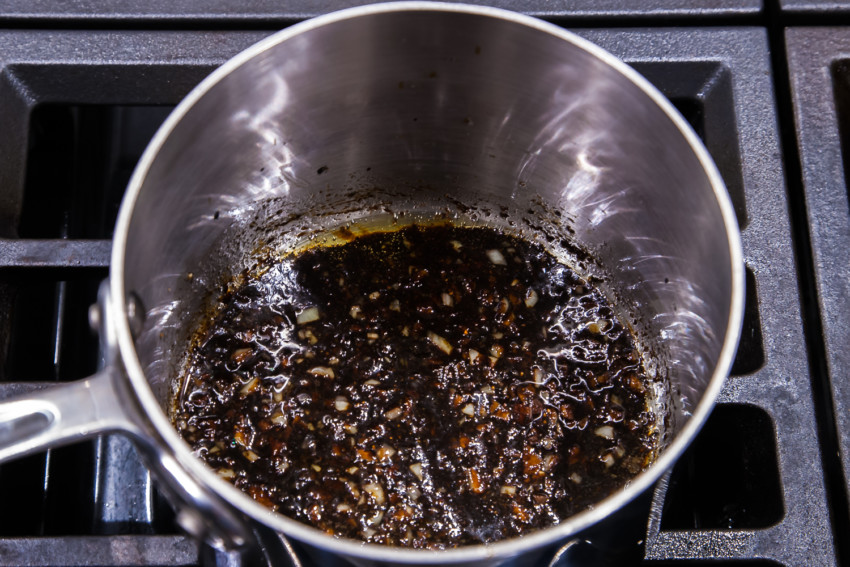
- When the beef is done marinating, add 1 tablespoon vegetable oil to the beef strips, mixing well (this seals the moisture in the beef). Heat a well-seasoned skillet under medium-high heat. When the pan is getting hot, add 1 teaspoon of vegetable oil and the marinated beef strips, stirring for about half a minute. Then add the black pepper sauce from step 5 to the beef, stirring to mix. Toss and stir the beef strips for few more minutes until beef strips are 80% to 90% cooked. Turn off the heat.
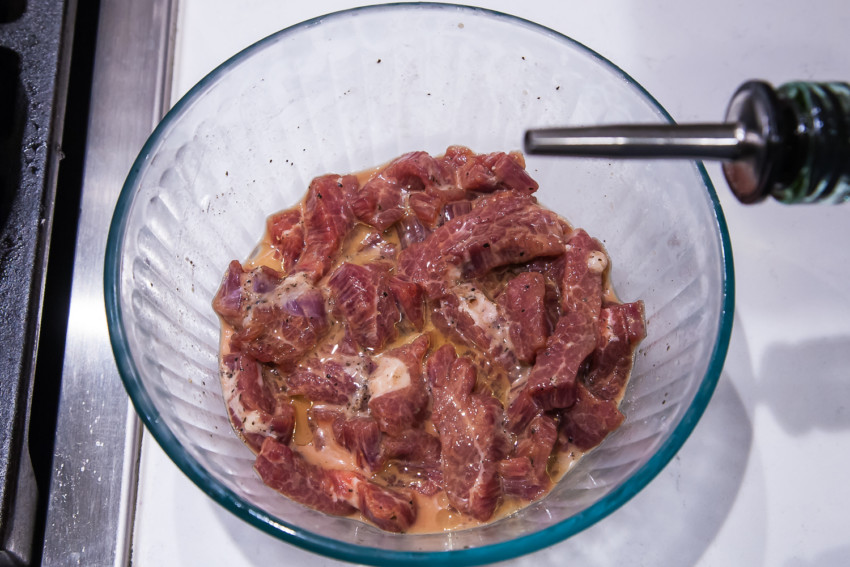
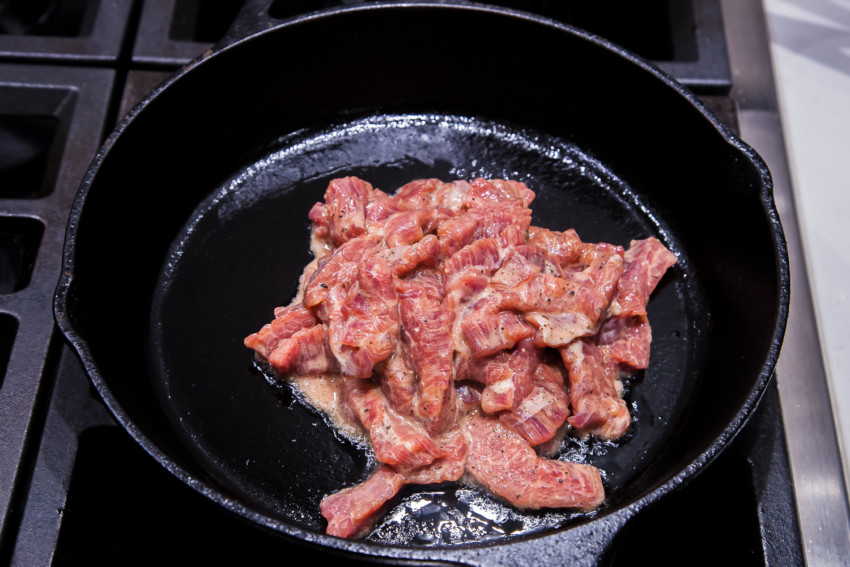
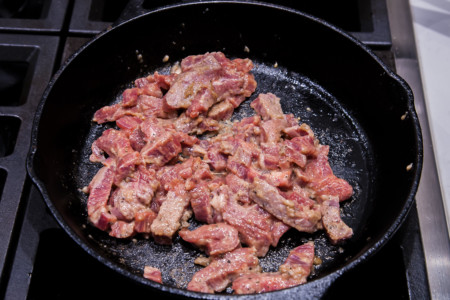
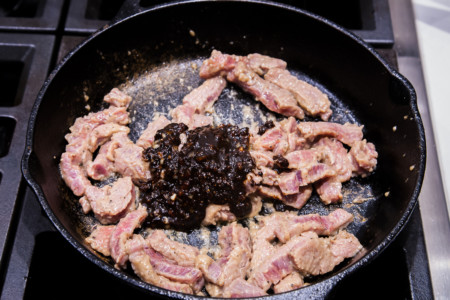
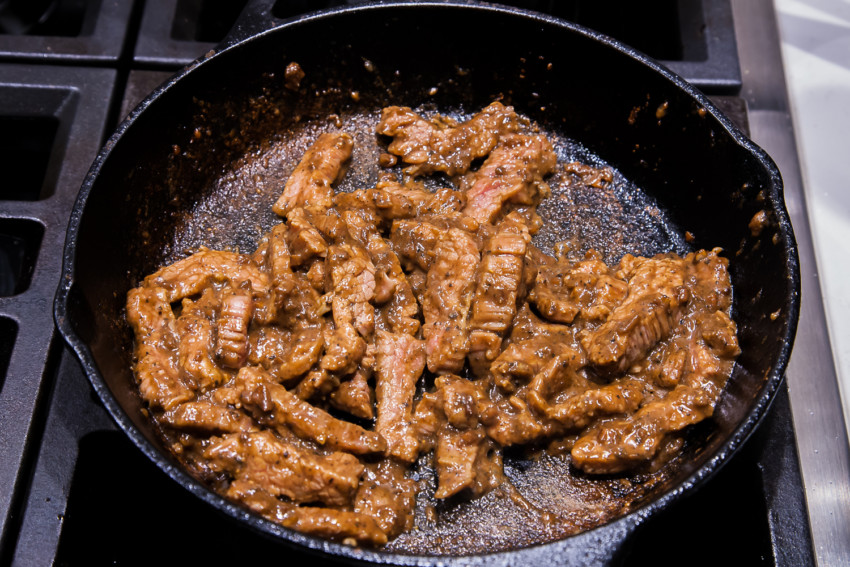
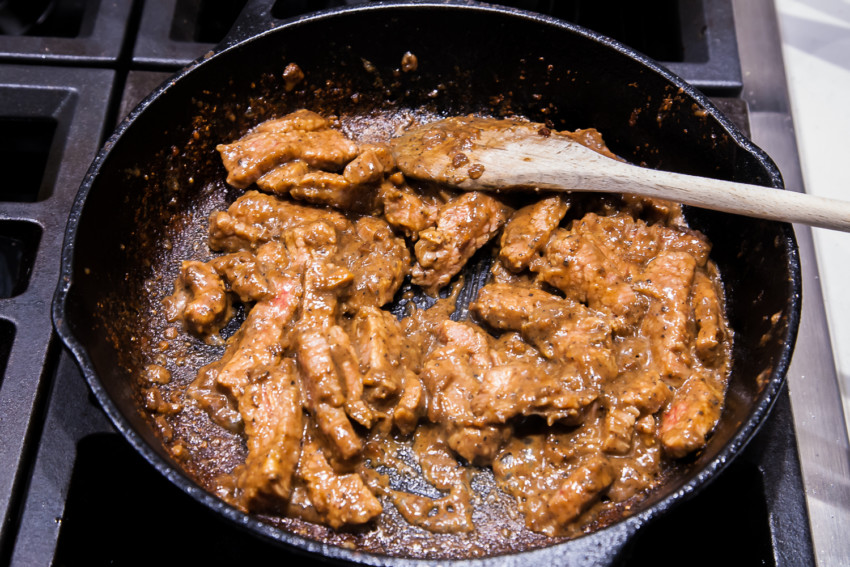
- Heat a separate skillet or nonstick pan under medium heat. When the pan is warm, add 1 tablespoon of vegetable oil. After the oil gets warm, add the sliced onion and bell peppers, stirring and tossing for a minute or two until the onions and peppers just begin to soften but still remain crisp. Add the mostly-cooked beef strips from step 6, mixing together with the onions and bell peppers for another half a minute. Turn off the heat. Transfer the Pepper Beef to a regular plate or to a small hot cast iron skillet (as depicted) to turn it into Pepper Beef on Iron Plate (铁板黑椒牛柳). Best enjoy while hot or warm.
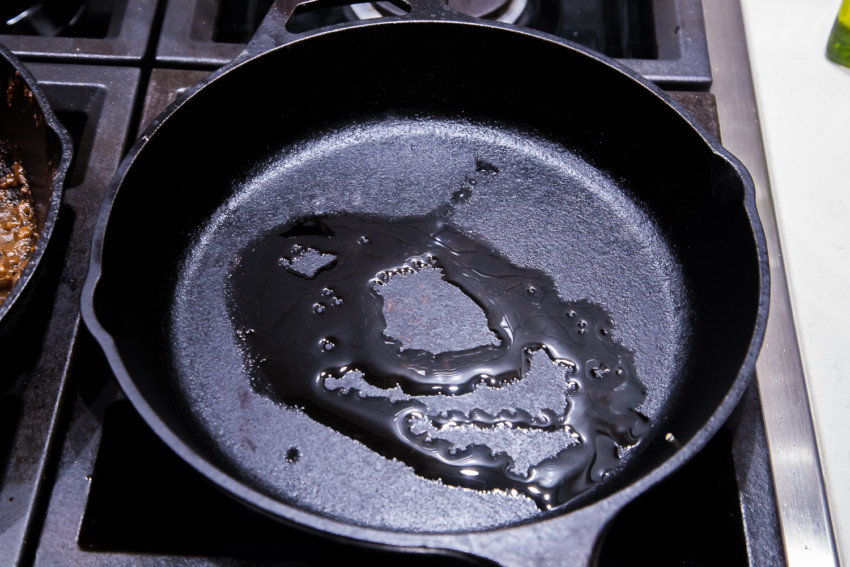
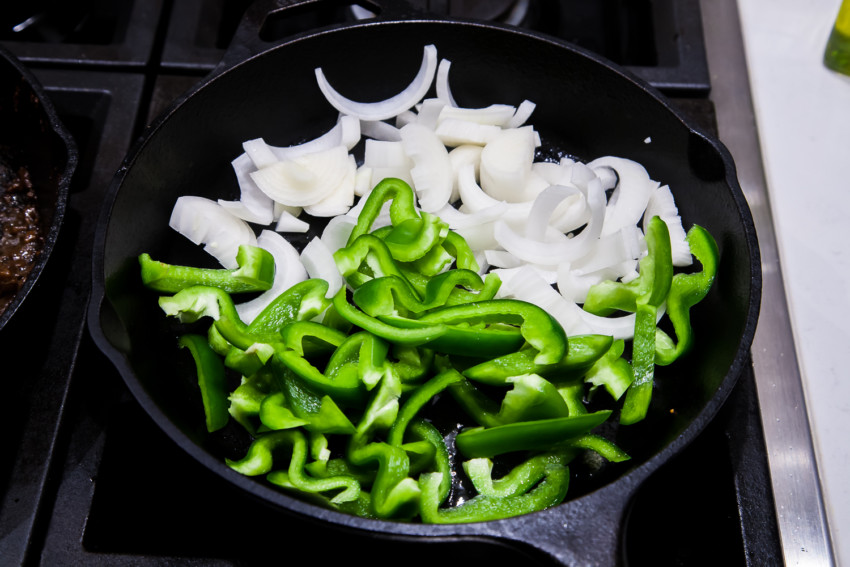
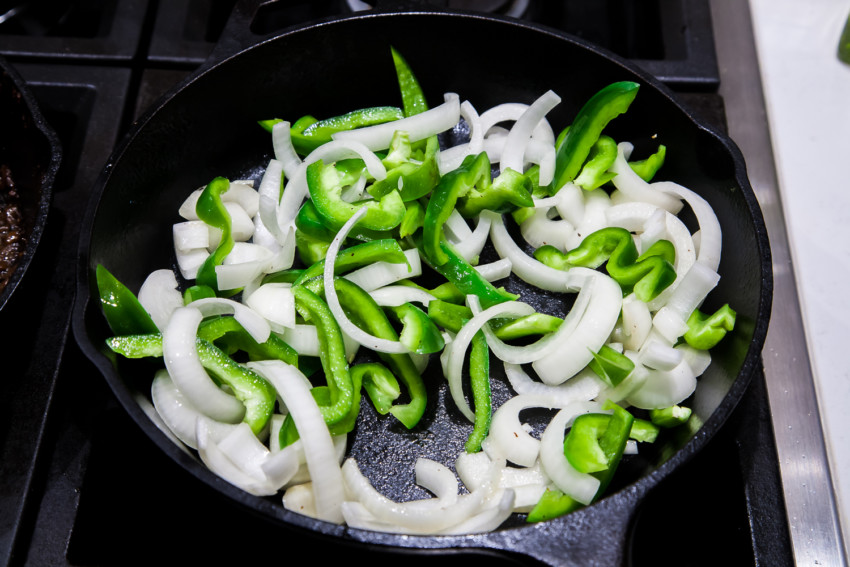
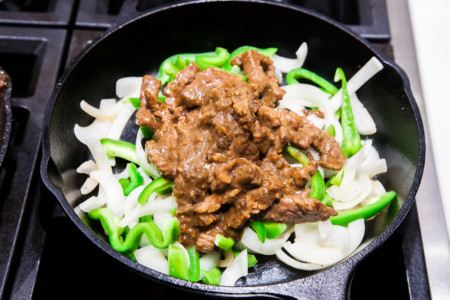
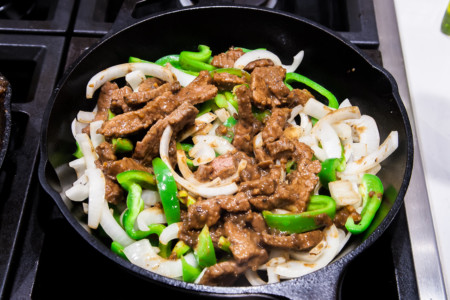
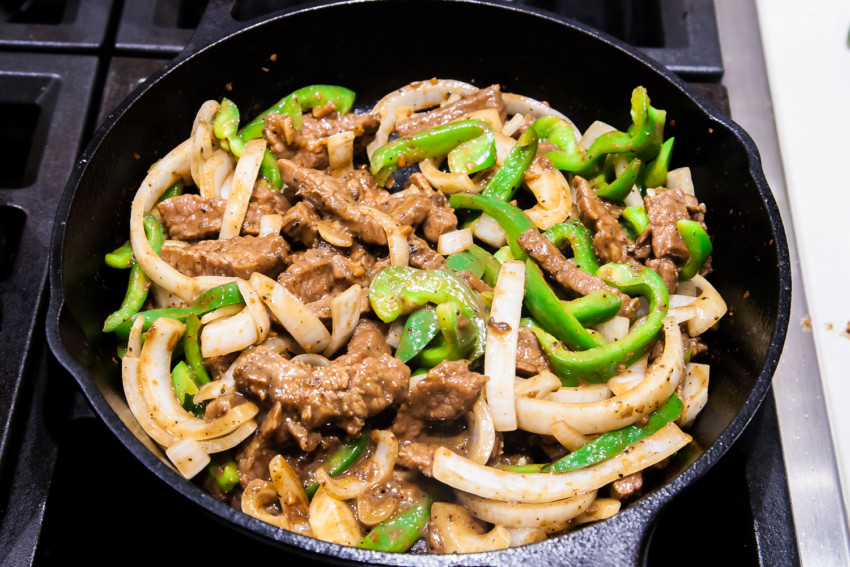
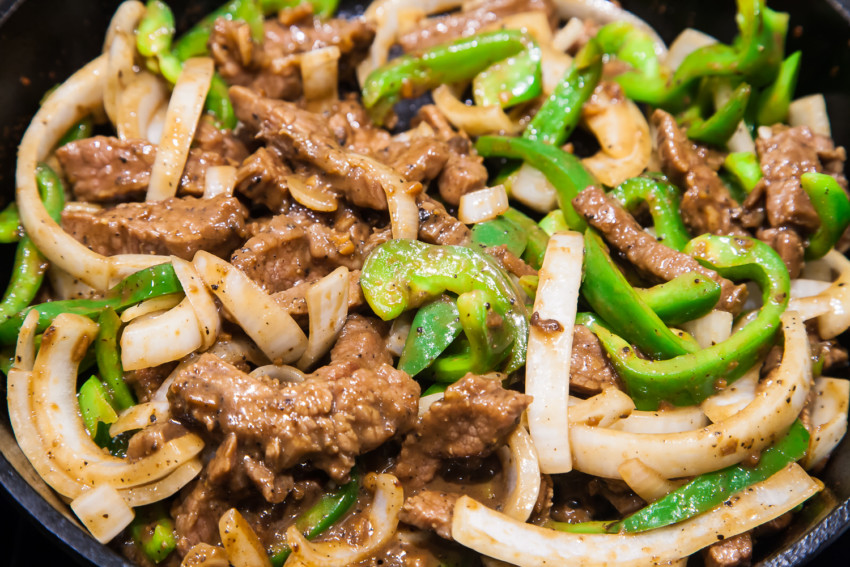

Bon Appétit
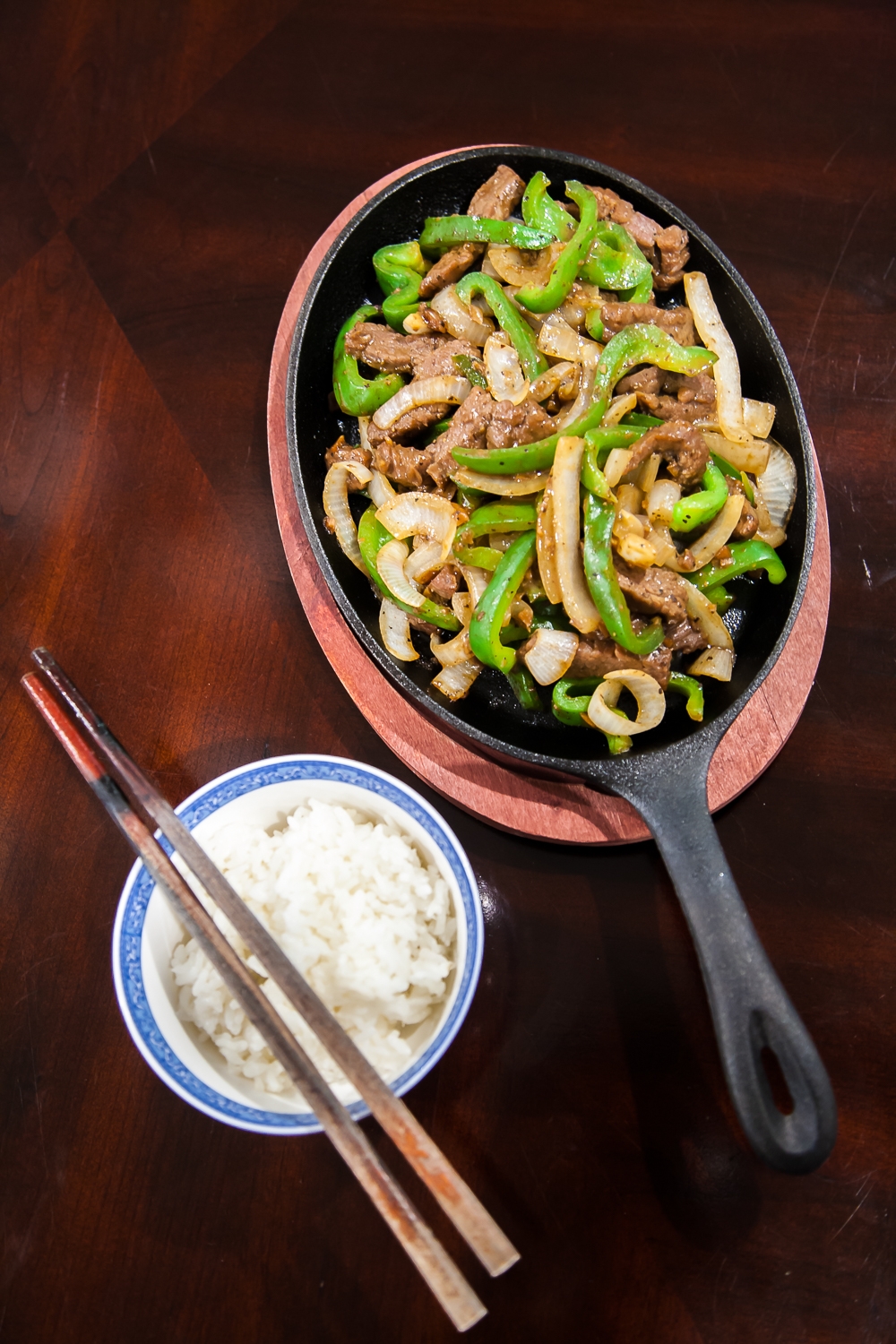
As an Amazon Associate I earn from qualifying purchases.


